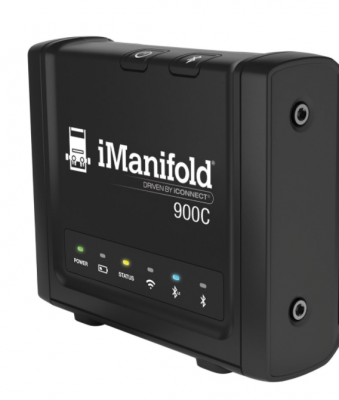Residential HVAC Diagnostic Tools

By: Reggie Hucks | Sep 02, 2021
Recently there has been a lot of news from the U.S. Department of Energy (DOE) about smart HVAC diagnostic tools. The DOE and several partners are collaborating to implement a program called The Residential HVAC Smart Diagnostic Tools Campaign. The goal is to promote tools that monitor equipment and give a technician immediate information regarding a system’s performance. Here are a couple of diagnostic tools that would be approved under this program.
Integration of Smart Phones
One of the biggest challenges an HVAC technician faces is troubleshooting refrigerant circuits. Problems such as partially shifting reversing valves, sticking check valves, or defective expansion valves can be hard to solve using traditional refrigerant gauges and remote thermometers. Basically, the technician is trying to look inside of a sealed system using 60-year-old technology. Once the problem is finally determined, the challenging work begins. Getting to the solution faster is part of the attraction of the new digital diagnostic tools. For example, instead of gauges, a manifold-type diagnostic machine communicates with smartphones or tablets that supply the technician performance information, locating problems faster. These systems are expensive but include programs that transmit data to central service teams, not just to a single technician. Team collaboration, technical assistance, and a more accurate diagnosis make these systems worth the investment.
Better Leak Detectors
Cooling and heating systems account for 44% of the energy consumption of U.S. residences. With a global push to reduce our carbon footprint, heat pumps will be a big player in the HVAC market for the foreseeable future. Efficient heat pumps are designed to work on an optimal refrigerant charge, but when they don’t, efficiencies suffer. Leaks can seriously impact heat pump performance and must be accurately located so that repairs can be made. New refrigerant detectors that employ molecular property spectrometer sensors are effective in locating leaks on a variety of refrigerant gases. The average response time can be under 5 seconds when a fractional leak is encountered.
There are other detectors that “hear” ultrasonic noises caused by a small leak in a system. These systems are specialized and can be used on a variety of refrigerants as well. Lack of pressure is the only limiting factor with these sensors, therefore, a “flat” system would have to be pressurized to find a leak.
Putting it All Together
While these new diagnostic tools are optimal for fixing broken systems, what about starting up a new piece of equipment? Unless a heat pump is properly leak checked and charged from the beginning, it will never operate as efficiently as designed. For example, a 19 SEER (Seasonal Energy Efficiency Ratio) heat pump that is ¼ pound low on charge could “starve” a coil, reducing the amount of heat the coils can absorb. This effectively derates the overall capacity of the system, creating longer run times and more energy consumption. On the other hand, overcharging a system could create flooding conditions to the compressor. The result can be premature compressor failure, reducing the expected life of the system. These new diagnostic tools can be used to validate efficient operation of the new system when started.
If the new initiative between the DOE and its partners is successful, all HVAC technicians will require training on these new innovative systems. Additionally, the systems will require a substantial investment from the HVAC contracting companies. The result will be an overall cost savings in operation and more comfort in each home, thereby making the initiative a worthy effort.


Diagnostic tools are far behind the technology in my professional opinion. The problem lies with the manufacturers. Until they are willing to spend the money to install in-line monitoring sensors and wireless, Bluetooth connectivity to their systems, I fear we will always be a step behind. It’s a simple solution to increasingly complex hvac systems. I’ve built prototype systems proving the theory for efficiency and longevity works. Sad the only way to get this done would be with the EPA getting involved and making it mandatory for manufacturers.